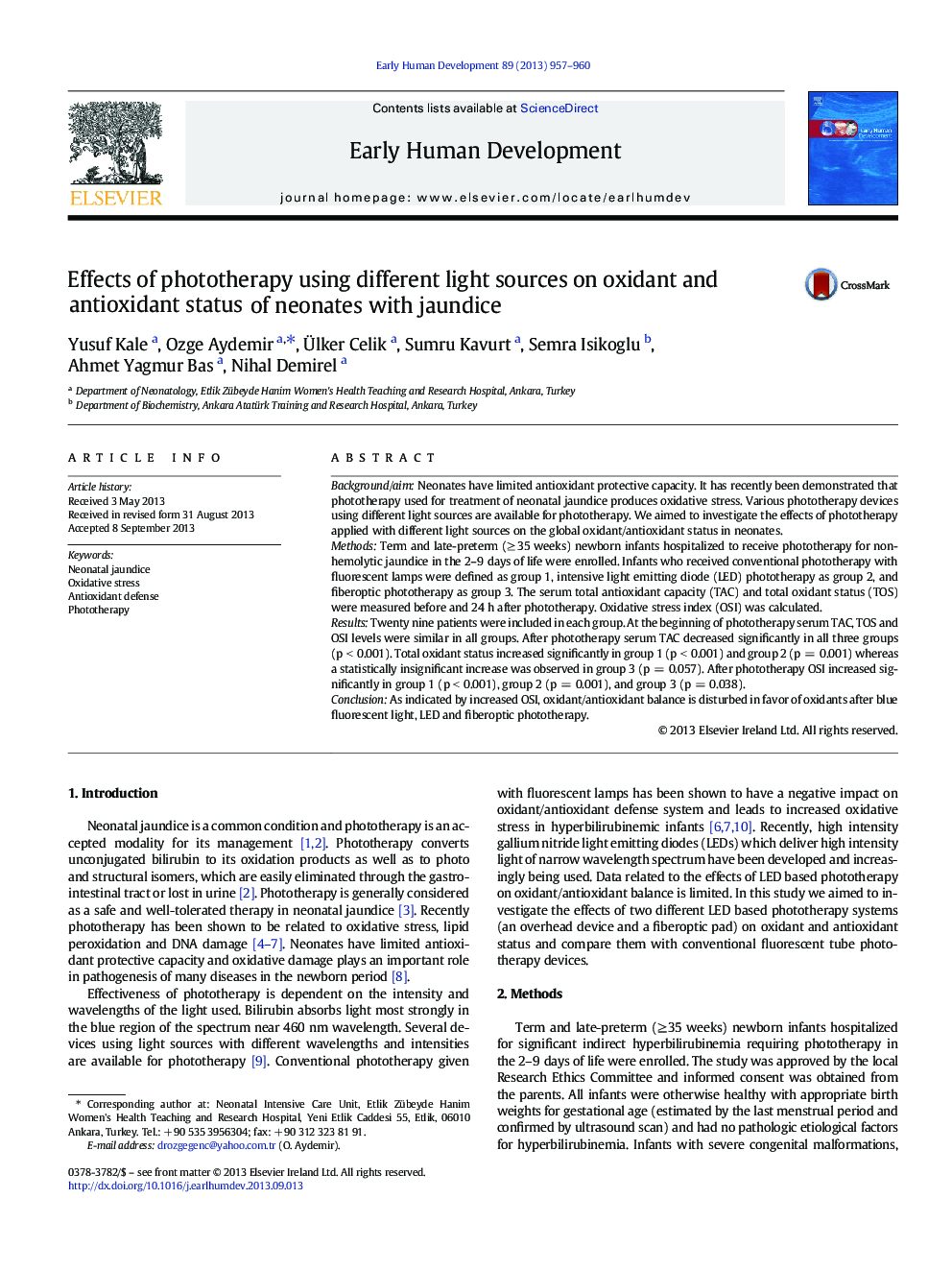| Article ID | Journal | Published Year | Pages | File Type |
|---|---|---|---|---|
| 6171919 | Early Human Development | 2013 | 4 Pages |
Background/aimNeonates have limited antioxidant protective capacity. It has recently been demonstrated that phototherapy used for treatment of neonatal jaundice produces oxidative stress. Various phototherapy devices using different light sources are available for phototherapy. We aimed to investigate the effects of phototherapy applied with different light sources on the global oxidant/antioxidant status in neonates.MethodsTerm and late-preterm (â¥Â 35 weeks) newborn infants hospitalized to receive phototherapy for non-hemolytic jaundice in the 2-9 days of life were enrolled. Infants who received conventional phototherapy with fluorescent lamps were defined as group 1, intensive light emitting diode (LED) phototherapy as group 2, and fiberoptic phototherapy as group 3. The serum total antioxidant capacity (TAC) and total oxidant status (TOS) were measured before and 24 h after phototherapy. Oxidative stress index (OSI) was calculated.ResultsTwenty nine patients were included in each group. At the beginning of phototherapy serum TAC, TOS and OSI levels were similar in all groups. After phototherapy serum TAC decreased significantly in all three groups (p < 0.001). Total oxidant status increased significantly in group 1 (p < 0.001) and group 2 (p = 0.001) whereas a statistically insignificant increase was observed in group 3 (p = 0.057). After phototherapy OSI increased significantly in group 1 (p < 0.001), group 2 (p = 0.001), and group 3 (p = 0.038).ConclusionAs indicated by increased OSI, oxidant/antioxidant balance is disturbed in favor of oxidants after blue fluorescent light, LED and fiberoptic phototherapy.
